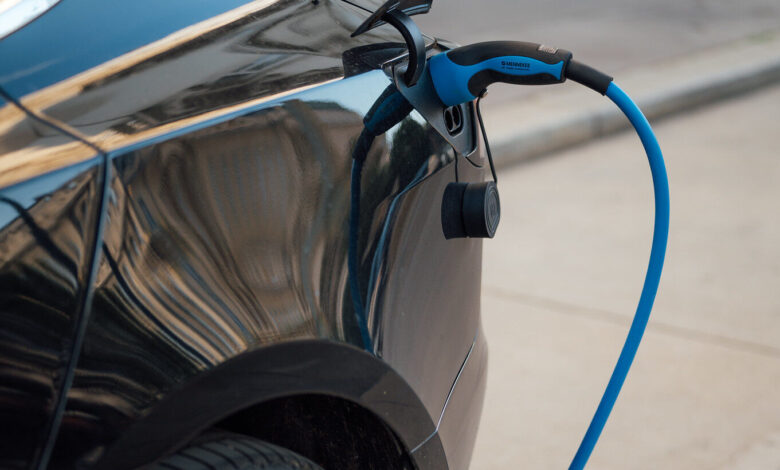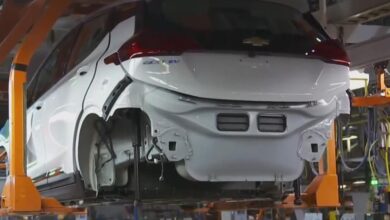New rules in the works for electric vehicle charging stations

In addition to changes to major portions of the city’s land use regulations, City Council heard at last week’s meeting about proposed changes to rules governing where public electric vehicle charging stations can be located in the future.
Because of Austin’s ambitious climate protection goals and strategies, which include reaching net-zero communitywide greenhouse gas emissions by 2050, city staff has proposed new land use regulations related to situating electric vehicle charging stations. According to the city’s Climate Equity Plan, by 2030, Austin should have “a compelling and equitably distributed mix of level 1, 2, and DC fast charging infrastructure to accommodate 40 percent of total vehicle miles traveled in the city. This translates to 226 megawatts of electrical load and could mean more than 37,000 charging ports.”
As Eric Thomas, zoning division manager with the Planning Department, told Council, “With the rapid transition to electric vehicle, or EV, use, there is a need for a principal land use for electric vehicle charging that balances environmental benefits with land use considerations.” He reminded Council that the city, which plans to electrify most city vehicles, has a goal of 40 percent of total vehicle miles traveled in Austin being electrified by 2030.
A spokesperson for the city told the Austin Monitor via email, “Currently, the City of Austin fleet comprises 337 battery electric vehicles (BEVs), which represent approximately 6.79% of the total on-road fleet. Looking ahead, we are forecasting a significant increase in the adoption of battery electric vehicles by 2030. Our projections indicate a 300% growth, bringing the total number of BEVs in the fleet to just under 1000 vehicles by the end of the decade. We anticipate that battery electric vehicles will constitute a substantially larger portion of our fleet, however it will depend on manufacturer production and the overall growth and composition of the fleet during that period.”
Austin Energy currently keeps track of commercial electric vehicle charging stations throughout the city. An Austin Energy spokesperson told the Monitor, “Currently, Austin Energy operates more than 1,500 level two charging ports as well as 30 DC Fast Chargers in the Austin area.”
Land use planners at the city want to make sure that electric vehicle charging stations are not concentrated within residential areas. They have proposed regulations for electric vehicle charging as a principal use, as opposed to an accessory use, such as what might be found in a grocery store parking lot.
“Staff finds it necessary to prevent the proposed EV charging use from becoming concentrated in active residential, mixed use or other pedestrian-friendly areas,“ Thomas said. “To accomplish this, the use will not be broadly permitted in a set of base zoning districts.”
The proposed regulations would permit electric vehicle charging stations at existing gas stations and discontinued gas stations, so long as a subsequent use of the site did not include a restaurant or a residential use.
Electric vehicle charging would be permitted or allowed as a conditional use on sites zoned for commercial services, liquor sales, properties adjoining highways, industrial sites, and research and development, according to the working draft of the proposed ordinance.
Staff also proposes that each commercial electric vehicle charging station be located at least 1,000 feet from another lot with such a station. In addition, they propose charging stations be limited to sites of 25,000 square feet or less, with at least one side of the property facing one of a variety of roadways.
The majority of citizens addressing Council on Thursday talked about the HOME ordinance, with little attention given to the charging station proposal. However, Amira Streeter with Voltera told Council that her company builds and operates electric vehicle charging facilities for all types of vehicles.
She said, “We provide EV charging stations across the nation for businesses and organizations who need to power their electric vehicles. Voltera greatly appreciates all the work that city staff have put into drafting this ordinance for this new use. We believe this ordinance allows for the reasonable development of land into charging stations but we do have feedback and want the Council and the commission to consider our recommendations.
“Voltera provides infrastructure for all types of EVs, including medium- and heavy-duty vehicles,” which she said “may look like a van, a truck or even a school bus.”
“And we have concerns about the distance requirements and the square footage restrictions that are currently being proposed. We would ask that instead of the 1,000-foot limit between sites, consider either removing that restriction or decreasing that limit significantly. This change would allow for flexibility while siting EV stations and offer reasonable access to charging while preserving density. Instead of having the 25,000-square-foot limit, we recommend increasing that to 50,000 square feet. Again, this allows for flexibility to find land that would allow for sufficient development of EV stations,” Streeter concluded.
A spokesperson for the Development Services Department told the Monitor there are currently two requests for conditional use permits for new EV charging stations that will continue to move forward under commercial off-street parking regulations. Any future applications will likely have to comply with the new regulations. However, Council is not scheduled to consider the new rules until May 16, along with the more controversial HOME proposals.
The Austin Monitor’s work is made possible by donations from the community. Though our reporting covers donors from time to time, we are careful to keep business and editorial efforts separate while maintaining transparency. A complete list of donors is available here, and our code of ethics is explained here.



